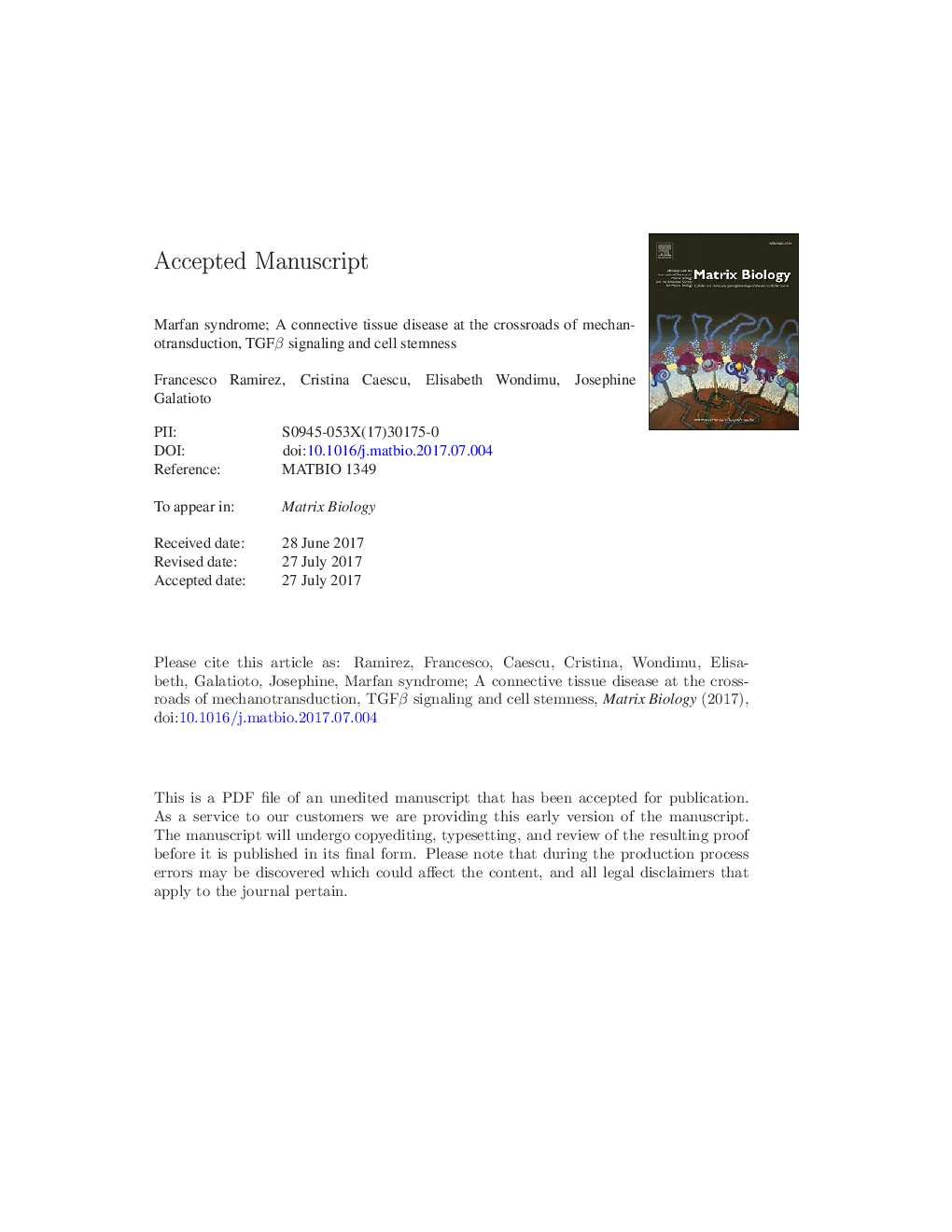| Article ID | Journal | Published Year | Pages | File Type |
|---|---|---|---|---|
| 10157692 | Matrix Biology | 2018 | 22 Pages |
Abstract
Mutations in fibrillin-1 cause Marfan syndrome (MFS), the most common heritable disorder of connective tissue. Fibrillin-1 assemblies (microfibrils and elastic fibers) represent a unique dual-function component of the architectural matrix. The first role is structural for they endow tissues with tensile strength and elasticity, transmit forces across them and demarcate functionally discrete areas within them. The second role is instructive in that these macroaggregates modulate a large variety of sub-cellular processes by interacting with mechanosensors, and integrin and syndecan receptors, and by modulating the bioavailability of local TGFβ signals. The multifunctional, tissue-specific nature of fibrillin-1 assemblies is reflected in the variety of clinical manifestations and disease mechanisms associated with the MFS phenotype. Characterization of mice with ubiquitous or cell type-restricted fibrillin-1 deficiency has unraveled some pathophysiological mechanisms associated with the MFS phenotype, such as altered mechanotransduction in the heart, dysregulated TGFβ signaling in the ascending aorta and perturbed stem cell fate in the bone marrow. In each case, potential druggable targets have also been identified. However, the finding that distinct disease mechanisms underlie different organ abnormalities strongly argues for developing multi-drug strategies to mitigate or even prevent both life-threatening and morbid manifestations in pediatric and adult MFS patients.
Keywords
ECMMVPANGIIMFSLTBPLAPAT1RIPSCBMDMSCLLCTGFβTAADCMFBN1SMCThoracic aortic aneurysmAngiotensin IIOsteopenialeft ventricleBone mineral densitySmooth muscle cellInduced pluripotent stem cellsMarfan SyndromeStem cell nicheFibrillinExtracellular matrixlarge latent complexMechanotransductionMitral valve prolapselatency-associated peptideCardiomyopathyDilated cardiomyopathy
Related Topics
Life Sciences
Biochemistry, Genetics and Molecular Biology
Cancer Research
Authors
Francesco Ramirez, Cristina Caescu, Elisabeth Wondimu, Josephine Galatioto,
